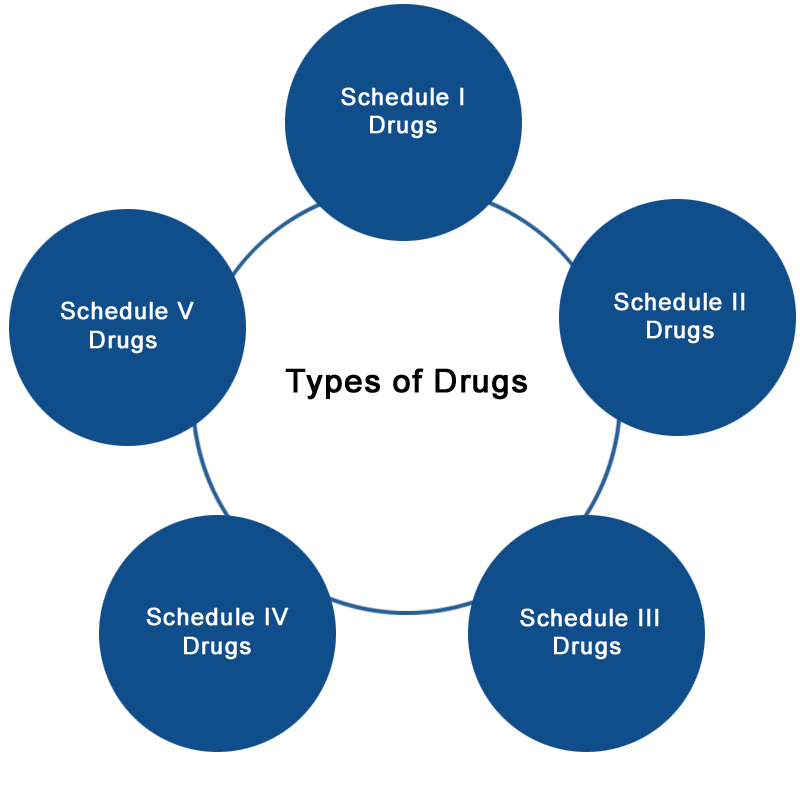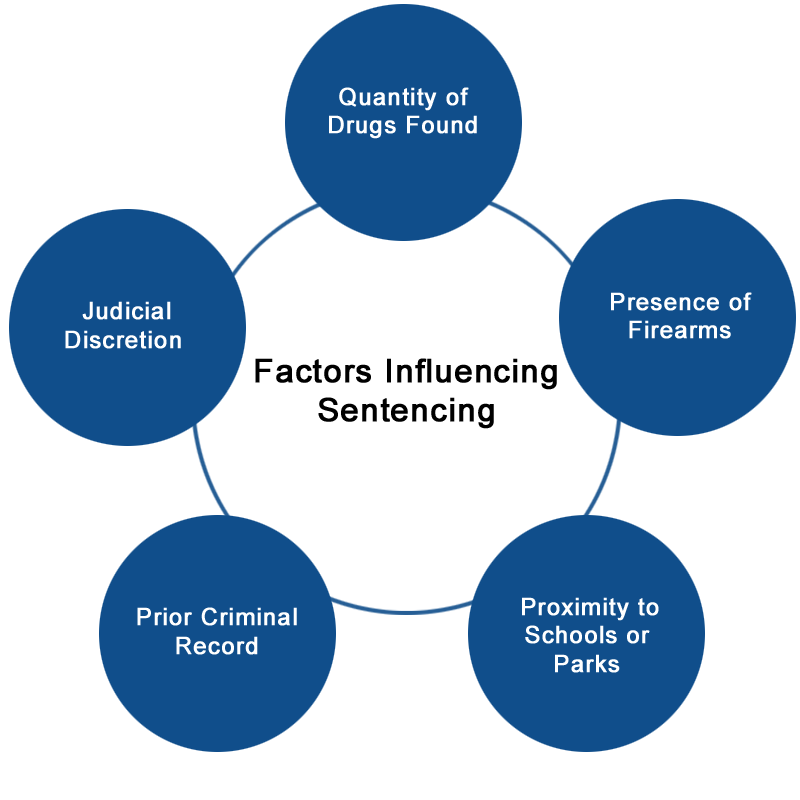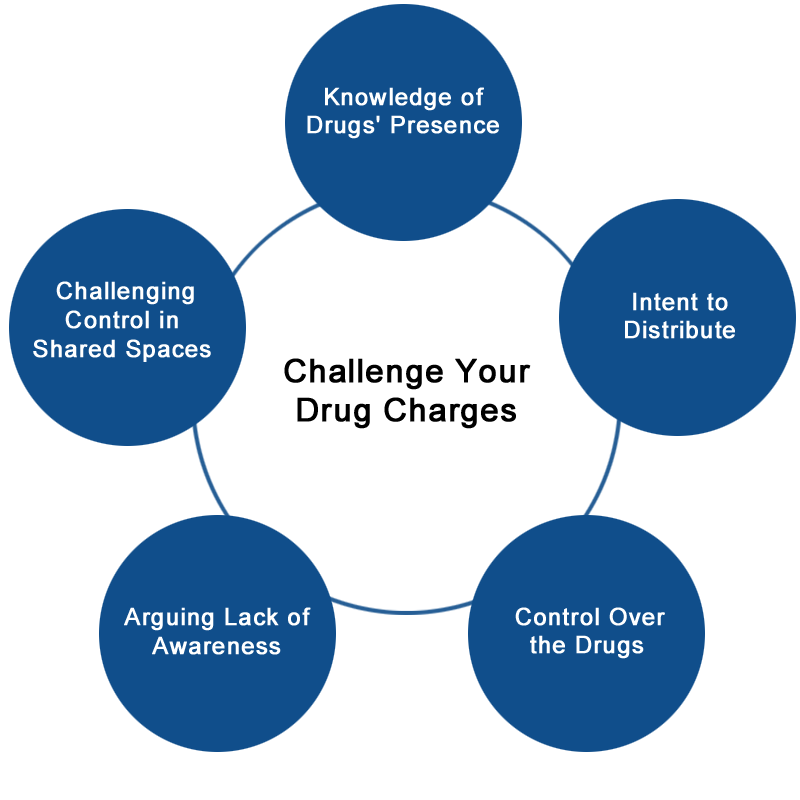
Possession with Intent to Distribute Drugs in Louisiana
Both Louisiana and Federal law consider Possession with Intent to Distribute (PWID) a felony, carrying with it severe consequences. Securing a conviction requires proving two key elements:
- Possession: To prove this, the prosecution must show that the person had knowledge about the controlled substances, or would have likely known about them, and had some control over them. This control can take the form of “physical possession” (having it on their person) or “constructive possession” (having it in their home, car, or other area under their control).
- Intent to Distribute: Proving this is often a matter of gathering circumstantial evidence that would suggest the person was not simply using the drugs for themselves, but was involved in selling them. This could include paraphernalia such as packages or bags, large quantities of cash, or a pattern of various people making short visits.
In proving these two elements, the prosecution can move forward with a conviction, creating far more severe penalties for those convicted than they would face from a simple possession charge.
Possession with Intent to Supply Drugs vs. Possession with Intent to Distribute
You may have heard “possession with intent to supply drugs” and “possession with intent to distribute” as two separate terms, and while Louisiana law uses both interchangeably, they ultimately mean the same thing. In either case, the person in question has drugs and has plans to sell, distribute, or give them to others. The distinction lies in whether the person plans to “supply” or “distribute” them to others, which is a subtle difference at best. Either way, the key element is that the person did not possess the drugs simply for personal use.
There are several ways that this possession can be charged:
- • Actual Possession: Having the drugs on their person.
- • Constructive Possession: Having drugs in a car, home, or other area controlled by the person.
- • Joint Construction Possession: Having drugs in an area controlled by two or more people, for example, a shared apartment.
If this possession occurs along with evidence of intent to distribute, such as baggies or scales, or if the drugs are found in sufficient quantities, the person can be charged with PWID.


What Amount of Drugs Constitutes Distribution?
The amount of drugs found on a person is a huge factor in determining whether they were using it for themselves or had plans to distribute them. Despite this, there is no strict rule under Louisiana about which specific quantities lead to a PWID charge. Instead, police are at their judgment about how what a “reasonable” amount of drugs looks like in making an arrest, and the jury uses their judgment in determining guilt.
But this is all subjective, meaning that one officer may consider a pound of marijuana enough to qualify for intent to distribute charges, while another may consider it a reasonable amount for personal use. That said, it’s generally understood that large amounts, for example, two pounds of marijuana or 20 pre-rolled joints, would lead police to determine that the person intended to share or sell the drugs. And that intention is all it takes to secure a conviction, even if the person never actually sold any drugs.
 Types of Drugs and PWID Charges
Types of Drugs and PWID Charges
Louisiana law describes a sliding scale of penalties and consequences for a charge of PWID, broken down largely by the type of drugs found.
The most serious charges are for Schedule I drugs, those with no accepted medical use and high potential for abuse, such as Heroine, Ecstasy, Peyote, LSD, Marijuana, and Psilocybin (magic mushrooms). Within Schedule I, a conviction will generally lead to up to $50,00- in fines and a prison term based on the type of drug. Heroin or Fentanyl will carry a hard labor prison sentence of 5-40 years. Less than 14 grams of Marijuana carries a hard labor prison sentence of between 2-10 years, while more than 14 grams can lead to a hard labor sentence of between 5-30 years.
The next step down would be Schedule II drugs, e.g. those that have some accepted medical use but still carry a high potential for abuse, such as cocaine or methamphetamine. These charges will often carry fines up to $50,000 and a hard labor prison sentence between 2-30 years.
Both Schedule III and Schedule IV drugs trigger similar charges, including fines up to $15,000 and hard labor imprisonment between 1-10 years. Schedule III drugs include anabolic steroids and codeine, drugs that have a moderate to low potential for abuse. Schedule IV drugs include those drugs with some accepted medical uses such as Xanax and Valium.
Finally, Schedule V drugs encompass those substances that have the least potential for abuse, such as couch medicine that has less than 200 mg of codeine per 100 ml. A PWID charge for a Schedule V drug could lead to fines of up to $5,000 and a prison term of up to five years.
Hard Labor
One difference you may have noticed between a PWID charge for Schedule I-IV drugs vs. a PWID charge for Schedule V drugs is that Schedule V drugs don’t trigger a hard labor prison sentence. As described by Louisiana law, “imprisonment at hard labor” is a type of jail sentence that includes physical work – be it assisting with farm duties, building or maintaining public infrastructure, manufacturing, or other public service.
This is, essentially, the classic “Cool Hand Luke” prison sentence, carrying out manual labor under the watchful eye of prison staff. Along with providing a means to give back to the community, this form of imprisonment is meant to instill discipline and help the prison system remain self-sufficient.
 Subsequent Offenses of Possession with Intent to Distribute
Subsequent Offenses of Possession with Intent to Distribute
So far, the potential jail terms and fines we’ve discussed for a PWID Charge all apply to those facing their first such charge. For second, third, or subsequent charges, the penalties increase.
For a second offense, in addition to greater fines, those convicted will see the mandatory minimum sentencing nearly double. For third or subsequent offenses, Louisiana’s “habitual offender” laws may apply, leading to the potential for life imprisonment.
Other Factors Influencing Sentencing
It is largely at the discretion of the judge to determine the severity of fines and prison terms for a conviction, and they will base this decision on several factors including:
- • Quantity of Drugs Found
- • Presence of Firearms
- • Proximity to Schools or Parks
- • Prior Criminal Record
Any of these can lead to far greater consequences for a conviction.
What the Prosecution Has to Approve (And How They Can Be Challenged)
Because of the wide range of activities it encompasses, PWID is a common charge in the state of Louisiana. Fortunately, an experienced attorney understands that there are a variety of ways to defend against these charges, as the burden of proof falls on the prosecution. To secure a conviction, the prosecution must prove each of the following.
What They Need to Prove: That the defendant knew about the drugs.
How An Attorney Can Respond: By arguing that the defendant was unaware of the drugs’ presence.
What They Need to Prove: That the defendant intended to share or distribute the drugs.
How an Attorney Can Respond: By arguing that the defendant had intended to use the drugs themselves.
What They Need to Prove: That the defendant had control over the drugs.
How an Attorney Can Respond: By arguing that the drugs were in a shared space or an area in which the client was not the only person with access.
 Those three pillars are primarily what a prosecution needs to prove to secure a conviction, and arguing against them is the most efficient way to preserve a client’s freedom. But there are other ways to defend against a PWID charge, including arguing:
Those three pillars are primarily what a prosecution needs to prove to secure a conviction, and arguing against them is the most efficient way to preserve a client’s freedom. But there are other ways to defend against a PWID charge, including arguing:
Law Enforcement Malfeasance: This can include showing how evidence was gathered through illegal search and seizure, that law enforcement induced the defendant to commit the crime (otherwise known as entrapment), that the initial stop was executed without proper authorization or that the defendant’s rights were otherwise violated.
Issues with Evidence: This can include asserting that there is insufficient evidence to prove the intention to distribute, questioning the prosecution’s argument over ownership, or demonstrating that the defendant was unaware of the presence of drugs.
Arguing Coercion: In certain circumstances, it can be possible to show that the defendant was compelled to commit the crime under threat of violence.
Beating Your Possession with Intent to Distribute Charges
At The Claiborne Firm, we’ve built our reputation for aggressive and effective legal representation on the bedrock of our ceaseless dedication and our exhaustive approach. To defend your freedom, we’ll do what it takes to gain a better understanding of your case than the prosecution. That means digging deeper, investigating every shred of evidence to find the proof of your innocence. That means taking a critical eye on the case against you and finding its flaws and weaknesses.
We then take what we’ve learned through this thorough approach to the prosecution, exposing the holes in their case and emphasizing the exculpatory evidence that flies in its face. It’s an aggressive stance that has led to countless reductions in charges or dismissals, ensuring your freedom is preserved.
Call today for a free, no-obligation evaluation of your case. Your freedom, dignity, and peace of mind are worth it.
Call (504) 294-8552 or Schedule a Free Case Evaluation Online
